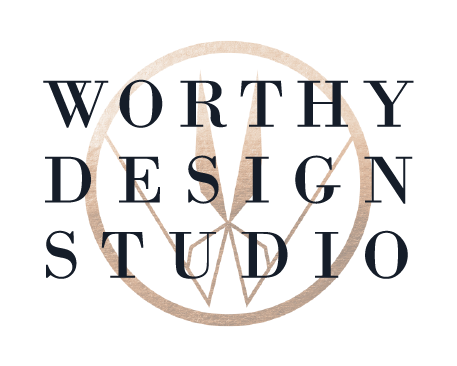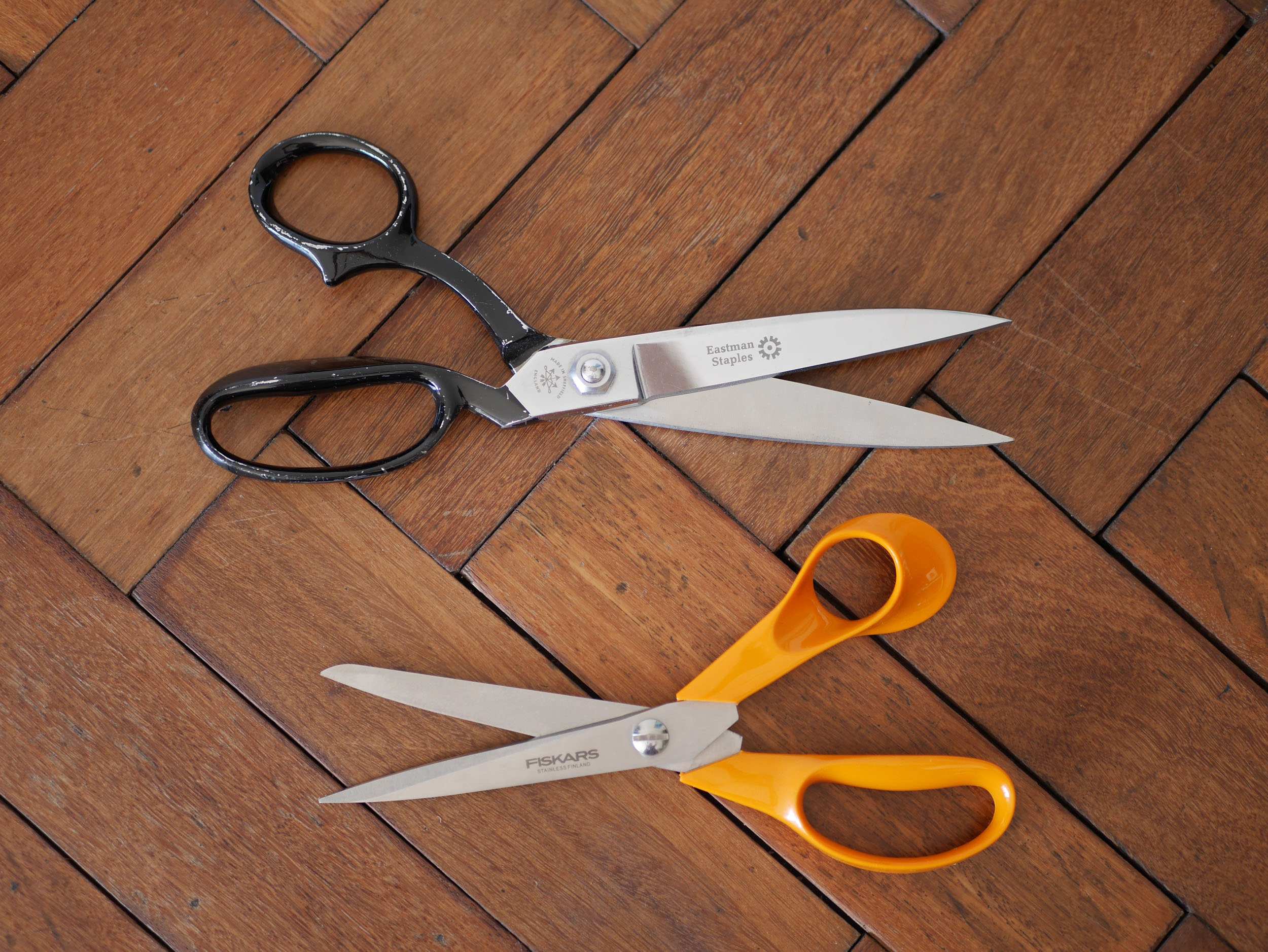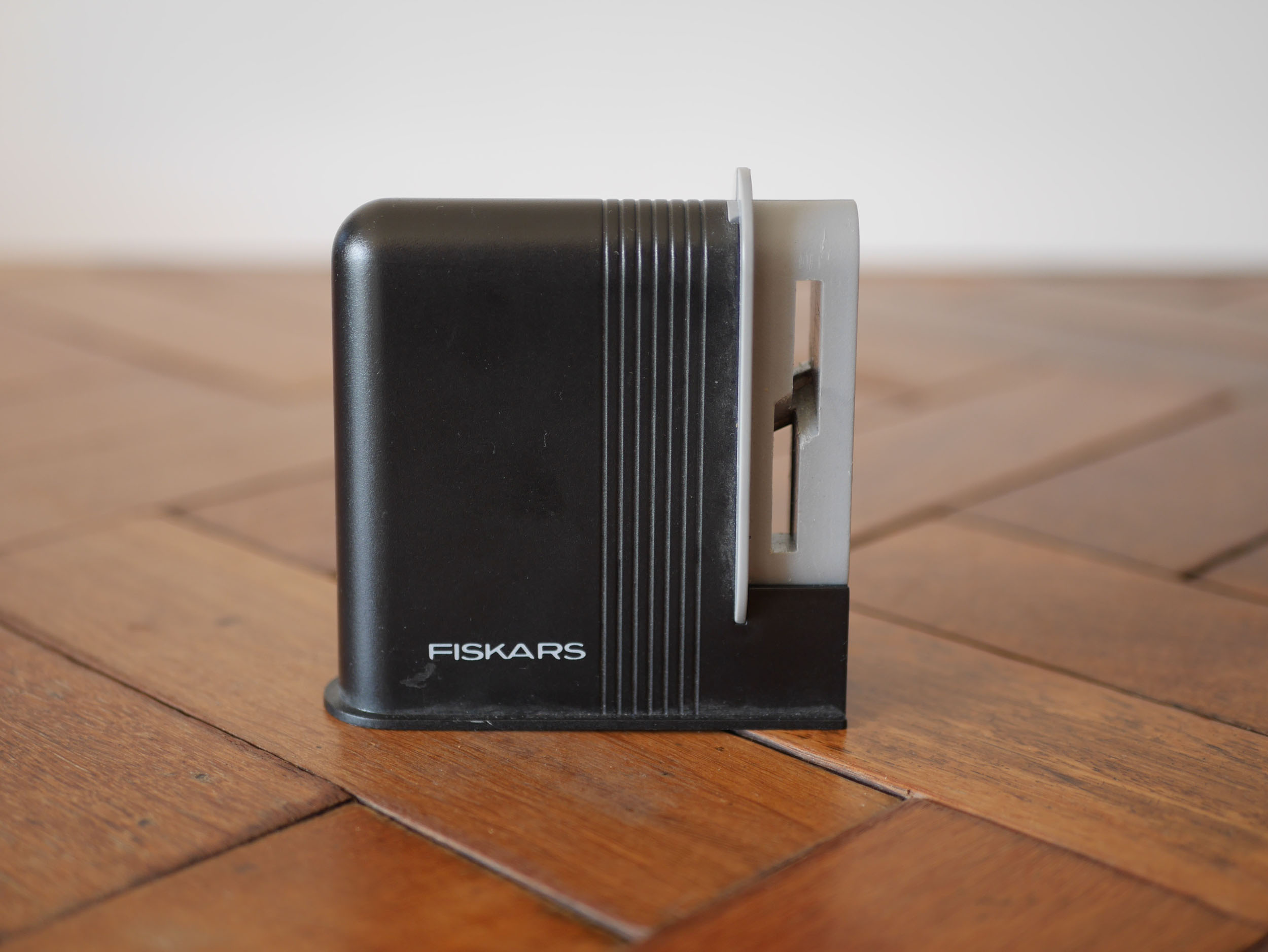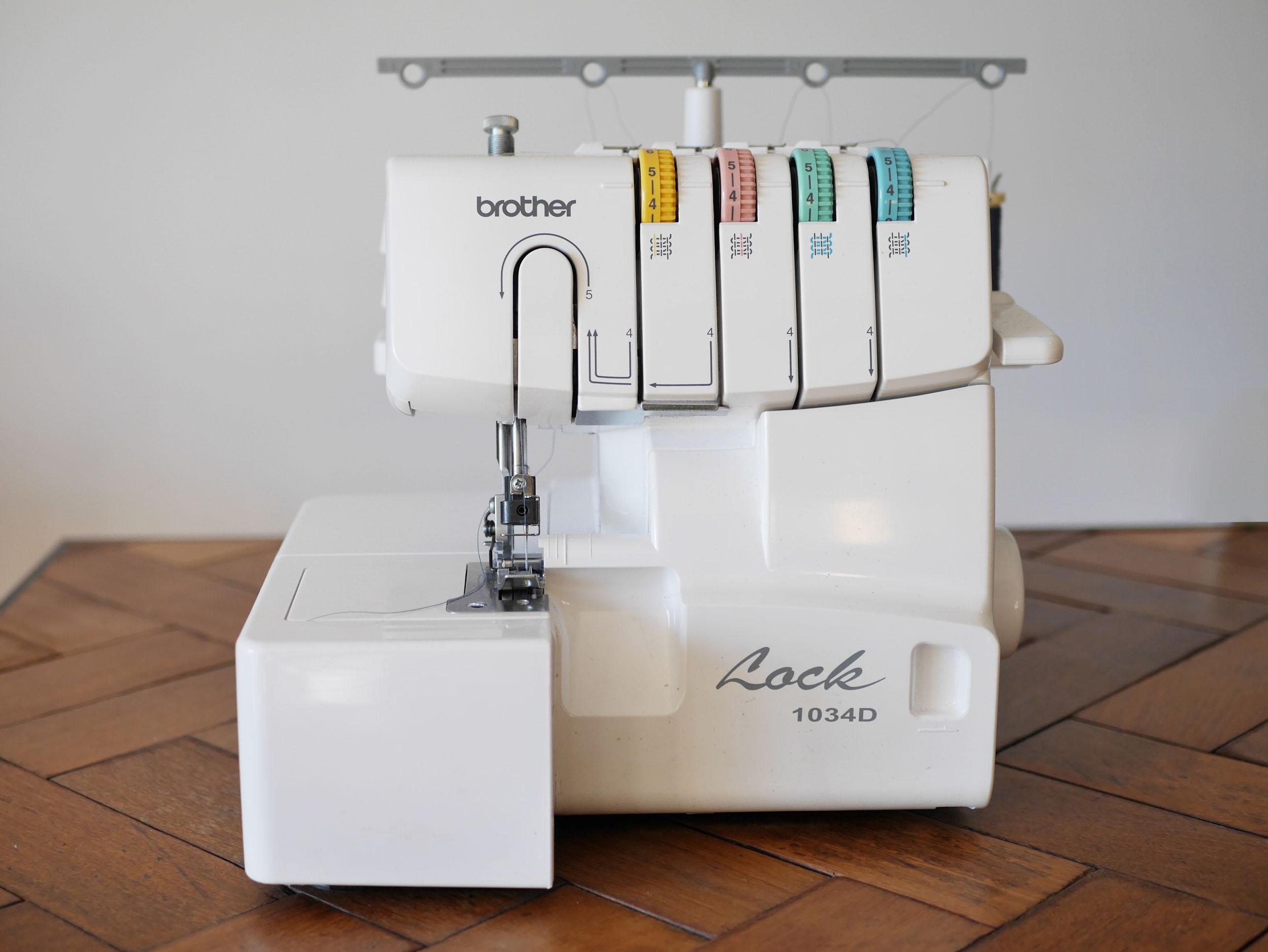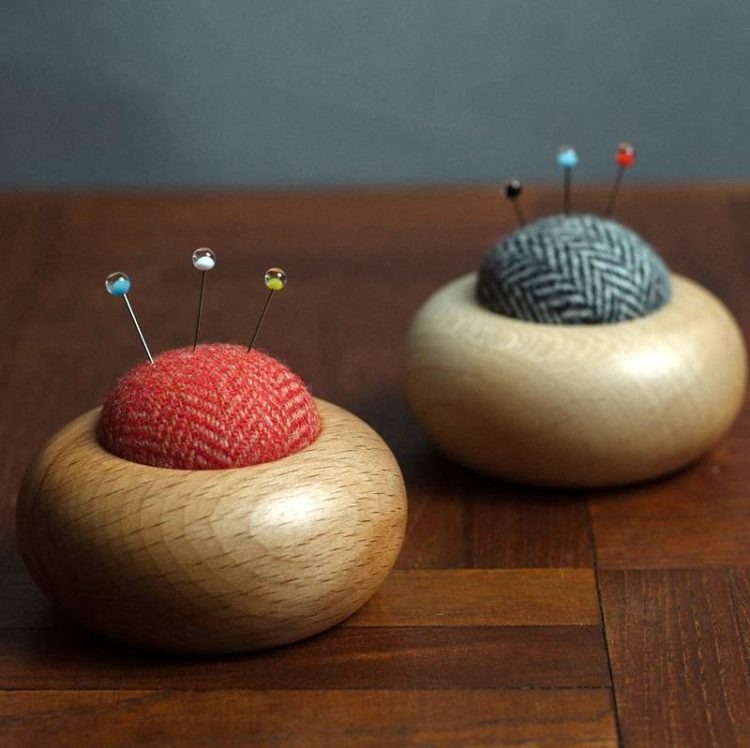Tools of the Trade - Sewing
A craftsman is nothing without their tools. And I'm a sucker for nice tools. I'm going to run you through the different ones that I use and if you're just starting out, it might help explain why you might need them.
FABRIC
SCISSORS
The golden rule is, always keep a seperate fabric scissors for fabrics and thread and paper scissors for patterns and never cut paper with your fabric scissors as it WILL blunt the blade. If you can, I really recommend investing in a good pair of fabric scissors. I'm lucky enough to own a pair of tailor's shears but they're pretty heavy so instead, I always use my orange handled Fiskars. I've been using my 21cm Fiskars General Purpose Scissors for over 11 years and I love it. It's one of the cheaper options in their range and I find it perfect for my small hands (for me, the larger version feels a little heavy after a lot of cutting).
SCISSORS SHARPENER
Another little gem of a tool is a scissors sharpener. Again, mine is a Fiskars one. It didn't break the bank and it's definitely cheaper than replacing your scissors every couple of years. You can use it to sharpen paper scissors too!
PAPER SCISSORS
Speaking of paper scissors, up until last year, I just used any standard scissors to cut paper and kept it sharpened. They worked perfectly and it's what I'd recommend. However...for our 1st wedding anniversary (paper anniversary), my husband bought me the Merchant and Mills Studio Scissors which is meant for cutting paper and it is just so slick. They really know how to make the nicest tools!
PINKING SHEARS
This pair was gifted to me by a friend (again, they are Fiskars) but I find them clunky to use. I've always found pinking shears awkward to use though regardless of the brand. But still, pinking shears have their merits. They prevent fabric edges from fraying if you don't have an overlocker and they give a nice finished edge to appliqué and bunting.
ROTARY CUTTER
It seems that quilters are clever people. They copped on to using rotary cutters way before garment sewers! This circular blade allows you to simply trace around your pattern pieces and it will cut your fabric as you go. Genius! Be careful as you lift the fabric after cutting though because sometimes a stray thread might have been missed and if you lift the fabric too quickly, it's likely to snag. I got mine second hand off Adverts so it's definitly worth looking there for lots of sewing equipment. This one is Fiskars (I sound like I’m sponsered by them! If only. Nope, I just really like their products) You can get replacement blades if yours starts to go a bit dull.
Hand Sewing Needles
These come in lots of shapes and sizes (see more info in my needles post here) but start yourself off with a set of universal needles. They'll see you right. Use them for basting, hand finishing, marking, buttons. Their list of uses is endless!
Tailor's Chalk
This is what you use to draw around your pattern pieces onto your fabric and to mark points like notches, darts and pockets. Ones I have used through the years include a chalk roller, chalk pens, a tailor's pencil and a regular tailor's chalk block. If you've found the holy grail of tailor's chalk, please point me in the right direction because I have a confession to make. I rarely use tailors chalk! I've yet to find one that draws a nice clean line so I tend to resort to using a soft pencil like a 4B. I've also used a fine felt tip pen. I only ever really use chalk if I'm working with heavy dark fabric like denim or wool.
Pins
Pins have lots of uses. They can help fit a garment, hold seams together as you sew, fix pattern pieces to fabric and so much more. As with needles, there are also different pins available depending what fabric you use. General ones are fine for most fabric but if you are using a fine fabric, do try to get your hands on some silk pins for delicate fabrics. They avoid any nasty snags. I use the dreamiest Entomology pins from Merchant and Mills for my fine fabric. I love love love black pins. I only ever really use straight pins because I don’t like the way a ball head pin buckles the fabric as I work but if you do like ball head ones, a good tip is that glass head pins don’t melt if you iron over them. Handy to remember if you’re pressing something before sewing it or simply if you forget to take the pins out before you hit your garment with the iron.
Sewing Machine
Soooo many on the market and I’ve only ever used Brother machines. Not because I’m loyal to them, it’s just what I’ve always used but I hear great things about Pfaff and Janome all the time and would love to try them. Mine is a Brother Innov-is 200 which I’ve had since college after running my mum’s old Brother into the ground. Dark days because I really loved her machine and honestly, I sometimes think it was better than what I have now. It’s on my to-do list to attempt and fix it but that might be a stretch! I don’t have a need for half the functions on my current machine and I find it more delicate. If you’re starting out in garment sewing, the mains things you need are a straight stitch, zig-zag stitch and a buttonhole function. I find that any extra features rarely get used.
Overlocker (Serger)
Overlockers are used to sew jersey and knitted garments and to give fabric edges and seams a really professional finish. While certainly not a necessary piece of sewing equipment, it’s a lovely luxury to have. I use a Brother 1034D and it’s a work horse. I’d highly recommend it. It’s entry level though so you won’t be able to swap the presser foot out for a cover stitch foot.
Weights
I’m new to the game on this one as I used to always pin my patterns to my fabric but weights are great if you don’t want any needle marks in your fabric. There are lots of fun ones out there in the market like these guys from KiddyLizzy on Etsy. Me, I just use washers from my local hardware shop. I use smaller ones for the finicky bits and larger ones for the main areas. Not great on fabric that lifts at the edges so I just stack them up if I need them a bit heavier. I also use this cute little cast iron, well, em, iron! Or whatever is to hand like a mug of tea, phone and books.
Pin Cushion
Most pin boxes are boring (unless you're lucky enough to have a gorgeous vintage box) so why not use a pin cushion instead plus it's easier to grab a pin from one than rifling through a box. Stabby stabby! I’ve unintentionally started to collect pin cushions. I use one for regular pins and one for silk pins. In truth I only have the two but I am looking to add to the collection and have my eye on these little beauts from Beyond Measure. Be sure to check them out and if you feel like buying me a birthday pressie, well don't say I didn't give you any ideas!
Snips
Snips are basically small pointy scissors that are handy to cut tiny threads or pokey bits. Mine are a Fiskars AGAIN (I mean really! Now this is just getting embarrassing!) and as with my fabric scrissors, I’ve had them since college and they’re still going strong. I use these instead of a stitch ripper as I find them better to control. Super for grading small seams, snipping button holes and clipping seams
Stitch Ripper
This is every beginner sewer’s friend! Quickly remove inevitable mistakes with this little guy. As mentioned above, I stopped using them because I prefer to use snips, but I think I might be alone there!
Thread
Have a basic set of thread colours to get you off the ground. Black, white and whatever you think your favourite colour is makes for a great base. Get yourself a bright colour too which you can use for basting or marking things on your fabric. The Gutermann brand are firm favourites. Their multi-use threads come in a rainbow of colours.
Measuring Tape
You won’t get too far without the humble measuring tape. Depending on what you prefer, they’re available in centimetres, inches or both. Some tapes even have the numbers going in two directions so depending on what side you pick up, you always start from zero. Genius. I really need to invest in a new one so I’m keeping an eye out for one that pulls at my heart strings. Suggestions welcome!
Thimble
I usually reach for my thimble when hand stitching through thicker fabric. A lot of people think that thimbles are for preventing a needle prick from the tip of the needle but they are actually used to protect the finger that pushes the needle though the fabric. I have an antique one safely locked away but this Prym thimble is the one I actually use. I think the finger plate looks like a fencing mask!
Magnet
Ever knocked over a dish full of pins or leave a few on the table and they roll everywhere including into the carpet, in between wooden planks or other crevasses you never knew existed in your sewing spot? Well this is where a magnet comes in. A good little tool to pick up any of those stray pins. Your pets/children/feet will thank you. This is another item I need to invest in...Beyond Measure, I'm looking at you!
That about sums up my go-to list of sewing tools. They’re not all necessary but each have their part to play. There are plenty more out there so I’d love to hear if you have any that you find useful to have on hand.
